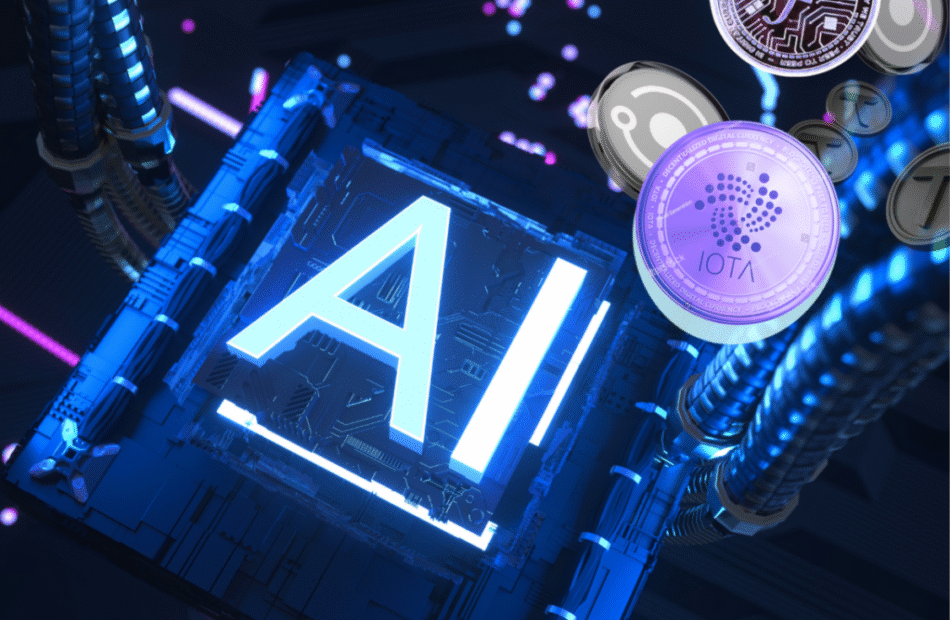DePIN: The Future of AI Infrastructure in Crypto
**Decentralized AI Infrastructure: A New Frontier for Crypto Investors**
Artificial intelligence (AI) is dominating headlines and investment portfolios in traditional tech markets. But over in the world of Web3, crypto investors aren’t staying on the sidelines. Even though most AI-related tokens haven’t matched Bitcoin’s gains this year, a new sector called DePIN—short for Decentralized Physical Infrastructure Networks—is showing long-term promise.
### What is DePIN?
DePIN refers to blockchain-based networks that provide real-world infrastructure like computing power and data storage in a decentralized way. Think of it as the Web3 alternative to cloud giants like Amazon, Google, and Microsoft. Instead of a few big corporations owning all the servers, millions of people and devices around the world contribute computing resources, earning crypto tokens in return.
DePIN projects use native tokens to reward users who help build and run this decentralized infrastructure. These tokens can be traded on crypto exchanges, making them investable assets.
### Why AI Needs DePIN
AI systems—especially large language models like ChatGPT—need huge amounts of computing power and data storage. Traditional cloud providers are struggling to keep up with demand. As AI continues to grow, it’s likely that decentralized infrastructure will play a bigger role in meeting those needs.
Michael Heinrich, CEO of 0G Labs, believes that decentralized systems could reduce the cost of AI operations by up to 90%. His company is building one of the largest blockchains focused on AI training, and recently raised $35 million in early funding.
Heinrich sees a massive opportunity ahead: “If Web3 infrastructure supports a trillion-dollar AI market by 2030, getting in early could be extremely rewarding.”
### DePIN Market Snapshot
Currently, the total market cap of DePIN tokens is around $3.5 billion. Some estimates even place it as high as $18 billion. While this is small compared to Bitcoin or Ethereum, analysts project it could grow to $12 billion or more by next year.
More than 13 million devices are already contributing to various DePIN projects each day, showing strong early adoption. This includes everything from home computers offering spare GPU cycles to storage devices adding decentralized cloud capacity.
### Top DePIN Tokens to Watch
Here are some of the leading DePIN projects making waves:
– **Bittensor (TAO)**: A decentralized network for training AI models. Developers contribute machine learning models and earn TAO tokens when others use them. (Market cap: $3.3B)
– **Render Network (RNDR)**: Offers decentralized GPU rendering and computing for artists and AI developers. (Market cap: $1.8B)
– **Filecoin (FIL)**: Provides decentralized data storage, acting as an alternative to cloud providers like AWS or Google Cloud. (Market cap: $1.6B)
– **The Graph (GRT)**: Helps apps find and query blockchain data quickly, with new services aimed at running AI workloads. (Market cap: $928M)
– **IOTA (IOTA)**: Supports internet-of-things (IoT) devices contributing computing resources in exchange for IOTA tokens. (Market cap: $774M)
These tokens are tied to actual network usage—not just hype—which gives them real utility.
### Challenges and Opportunities
Despite the excitement, most DePIN tokens have underperformed compared to Bitcoin this year. Many investors are still trying to figure out which projects have staying power and which ones are just jumping on the AI bandwagon.
Gregory Cowles, Chief Strategy Officer at Intellistake Technologies, points out that what’s revolutionary isn’t just AI or blockchain—it’s combining both into something that can scale affordably and fairly. He sees the tokenization of computing power and storage as a turning point for crypto investing.
The risk? Not all tokens are equal. Some may have great tech but poor tokenomics, meaning investors might not see returns even if the project succeeds in other ways.
### Investing in AI Infrastructure via Crypto
For those looking to invest in the AI boom through crypto, DePIN offers a new kind of “picks-and-shovels” opportunity. Instead of betting on speculative meme coins, you’re investing in infrastructure that supports real workloads—like training AI models or storing massive datasets.
However, it’s important to note that measuring the value of these tokens is tricky. Each project tracks utility differently—Bittensor focuses on AI compute power, Filecoin on data storage capacity. This means investors need to do deeper research into how these networks operate.
### The Bigger Picture
AI is pushing centralized infrastructure to its limits. Web3 could offer a more scalable and democratic alternative through decentralized networks. The idea is simple: instead of big tech companies controlling how AI evolves, these decisions can be made collectively by users and developers worldwide.
If DePIN lives up to its potential, today’s low-cost tokens could become high-value assets in the future. Projects like Ocean Protocol, which powers a decentralized data marketplace for AI training, still trade under $0.30—highlighting how early this space is.
According to analysts at Messari, DePIN could grow 100x over the next decade as blockchain-based networks begin to chip away at the dominance of centralized cloud providers.
For now, the sector remains a high-risk, high-reward space—but one with growing real-world relevance as AI continues its explosive growth.

